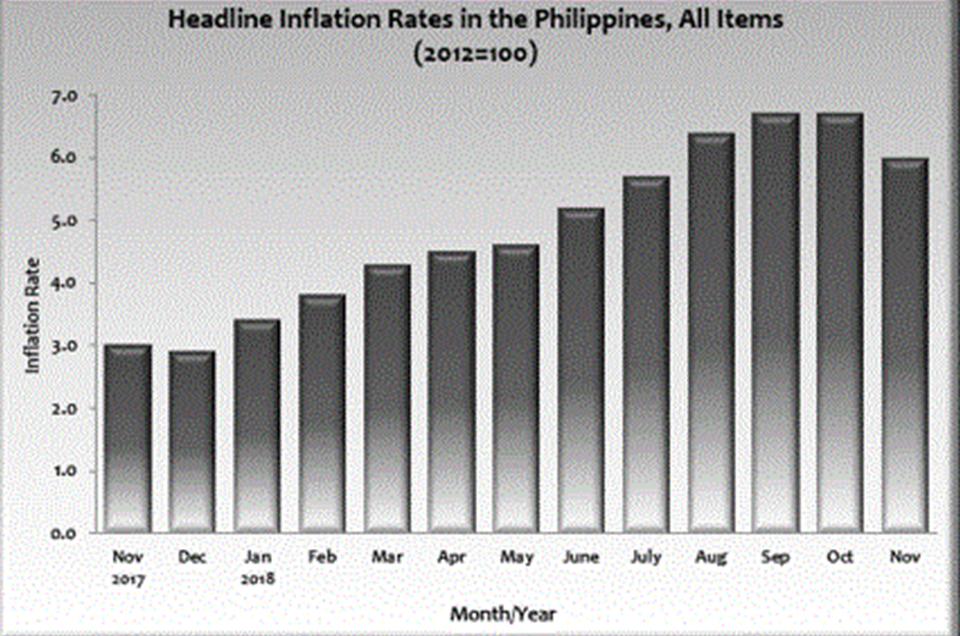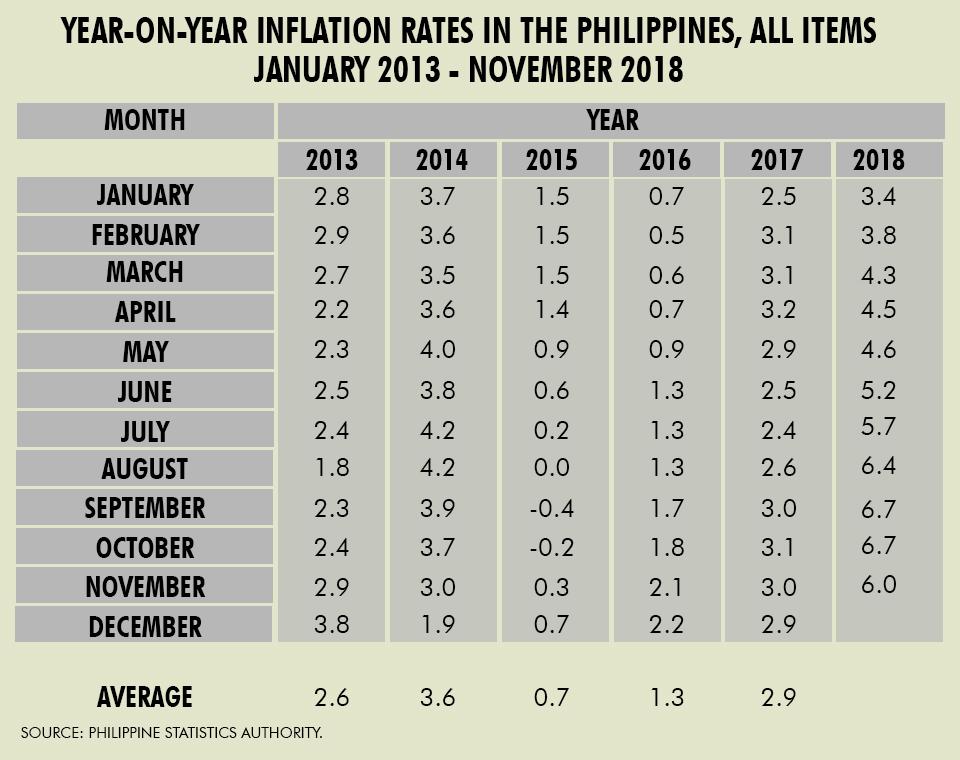Inflation eased to 6% in November —PSA

Inflation slowed down to 6 percent in November, the Philippine Statistics Authority (PSA) announced on Wednesday.
Food and fuel prices were significantly lower last month, the statistics office noted.
“Slowdowns in the annual increase were noted in the indices of food and non-alcoholic beverages at 8.0 percent; housing, water, electricity, gas, and other fuels at 4.2 percent; and communication at 0.4 percent,” National Statistician and PSA chief Lisa Grace Bersales said in a press conference in Manila.
Last month’s inflation print is slower than in September and October, which came in at a nine-year high of 6.7 percent.
But it is faster than the 3.0 percent posted in November 2017.
It is within the Bangko Sentral ng Pilipinas’ forecast range of 5.8 percent to 6.6 percent and slower than the 6.3 percent estimate of the Department of Finance.

“The November headline inflation at 6.0 percent is very encouraging ... It confirms that inflation is heading back to the 2-4 percent target range in response to non-monetary measures to curb food prices as well as favorable recent developments in highly volatile international oil prices,” BSP Governor Nestor Espenilla Jr. said in a text message to reporters.
“Strong monetary action has significantly reinforced the anti-inflation process through the expectations route and a firmer peso. However, its more direct impact on economic activity will take a longer time to take hold,” Espenilla said.
The central bank chief said monetary authorities need to stay vigilant to keep inflation under firm control amid expected strong economic growth, the central bank chief said.
“Year-on-year average price increase in November may have eased to 6.3 percent, down from 6.7 percent in October,” the DOF said in its Economic Bulletin.
Inflation clocked in at 6.7 percent in October, unchanged from September. It was the fastest in over nine years since it came in at 7.2 percent in February 2009.
“This easing in inflationary momentum comes from both the decline in prices of food and non-food commodities. Rice and vegetables recorded big declines while meat and fish continue their upsurge,” the DOF said.
The increase in electricity prices was offset by rollbacks in prices of diesel, gasoline, kerosene, and cooking gas, it added.
Year-to-date, inflation settled at 5.2 percent in January to November and hit the government’s revised inflation target of 4.8 percent to 5.2 percent for the whole 2018.
“We are optimistic that inflation will stabilize further in the near term. But we will keep a vigilant eye on upward pressures such as volatility in the global oil market,” the Duterte administration’s economic managers—the secretaries of Budget, Finance, and Socioeconomic Planning—said in a joint statement.
Month-on-month
Month-on-month, Bersales noted that inflation was -0.3 percent.
“This is the first time we saw negative month-on-month inflation since February 2016 when it came in at -0.2 percent,” the PSA chief said.
“A negative inflation means, relative to the previous month, talagang humuhupa na o bumababa na ang presyo,” she said.
Month-on-month inflation has been easing month-on-month since August 2018, Bersales noted.
“Relative to the previous months, one can say that inflation is decelerating,” University of Asia and the Pacific School of Economics dean Cid Terosa told GMA News Online. —KBK/VDS/RSJ, GMA News




